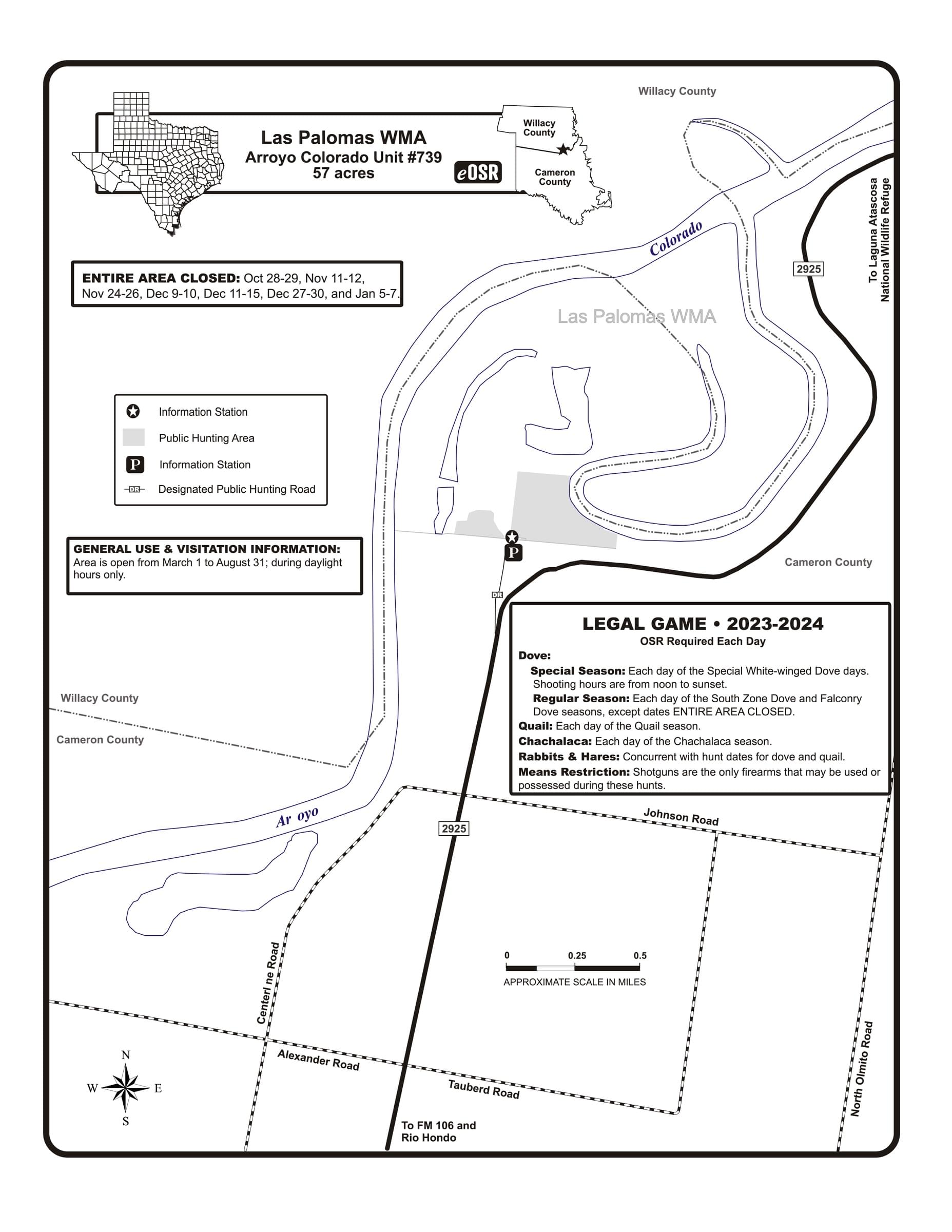Las Palomas WMA--Arroyo Colorado Unit (restricted access)
Las Palomas WMA--Arroyo Colorado Unit (restricted access)
XX Farms Colonia, Texas 78583
Map & hunting scheduleWildlife Management Areas of the Texas Official Website
Public Hunting Lands Map booklet
Las Palomas Wildlife Management Area Official Website
Tips for Birding
Area is open for general use from March 1 to August 31 during daylight hours.
About Wildlife Management Areas of the Texas
See all hotspots at Wildlife Management Areas of the Texas
Many Texas Wildlife Management Areas are open for activities such as biking, primitive camping, birding, fishing, hiking, equestrian activities, driving tours, and wildlife viewing.
Many times you need minimally a Texas Limited Public Use Permit (LPU - #175). You can purchase a Limited Public Use Permit or Annual Public Hunting Permit at any location that sells hunting licenses or at the Texas License Connection. If purchased online a representation of receipt is acceptable until official printer version has been mailed to you. In some cases it's not obvious when you need a permit for a Texas Wildlife Management Area so it might be better to be safe, because Texas game wardens do check for such permits.
About Las Palomas Wildlife Management Area
See all hotspots at Las Palomas Wildlife Management Area
Las Palomas Wildlife Management Area (LPWMA) consists of 18 management units throughout the Lower Rio Grande Valley. These lands were acquired for the purposes of conserving white-winged dove nesting habitat. Purchase of the units started in 1958 and continued through 1992. Funding for the purchase of these units was primarily funded by white-winged dove stamp dollars. The LPWMA manages Tamaulipan thornforest, grasslands, farmland, and wetlands for wildlife. Initially, properties were acquired for white-winged dove nesting habitat. Efforts were then focused on conservation and re-establishment of Tamaulipan thornscrub through re-vegetation, in areas where it was lacking up through 2011. Efforts have now shifted focus to combating non-native and invasive grasses through mechanical and chemical treatments, yearly.
In addition to hunting and conservation efforts, LPWMA fosters research opportunities for universities, non-profit organizations, and other governmental agencies. Current and past research has included songbird, hawk, and hummingbird banding, snake fungal disease investigations, black-spotted newt occupancy, ocelot habitat use, and species of greatest conservation need surveys.
Content from Wildlife Management Areas of the Texas Official Website, Public Hunting Lands Map booklet, and Dell Little
Last updated November 27, 2023
 Dell Little
Dell Little